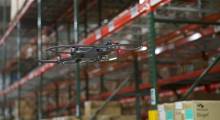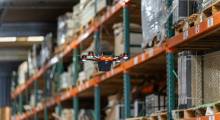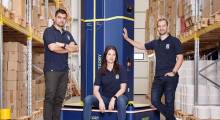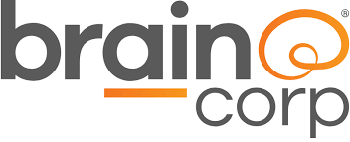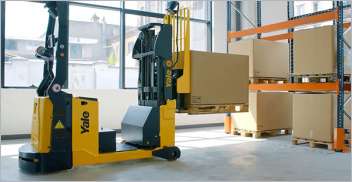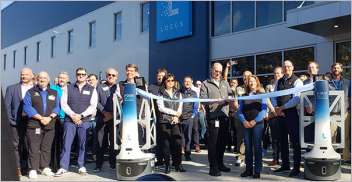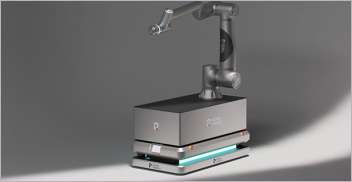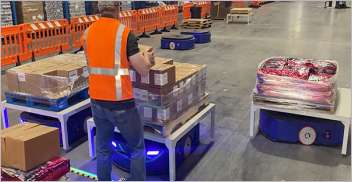Data is the key to everything, especially when it comes to automation systems and robotics. End users are always looking for more data and the right data. What if there was a way to utilize the data collected in facilities now - in some cases using robots already deployed - to improve operational efficiency for years to come?
Brain Corporation, a software developer for autonomous mobile robots (AMRs), expanded its product offerings based on feedback from its customers to address a new use case - inventory management. Not only did it create multiple options to suit different business operations, it also enabled opportunities for its customers to apply their data to future use cases.
From floor scrubbers to inventory management
Brain Corp initially developed its BrainOS software to provide autonomy for AMRs. As the software’s capabilities expanded, the company built additional products on top of its core software, including BrainOS Clean Suite for autonomous floor scrubbers.
Gavin Donley, Brain Corp head of marketing, said the company initially targeted the retail vertical market. After finding success providing autonomy for floor cleaning robots, such as Tennant Company floor scrubbers, Brain Corp’s customers shared a new idea.
“If these floor scrubbers are already navigating an aisle, what else can they do?” Donley said. “In partnership with our customers, it was identified that there's a lot of issues that exist within the inventory management space.”

Andrey Martsenyuk, Brain Corp director of software engineering, said the company learned over time the nuances and intricacies of retail supply chain management, working with customers to find opportunities where robots can integrate into operations.
“We learned of this problem from multiple retailers that we already had our cleaning robots at,” Martsenyuk said. “From a product and engineering perspective, it's really nice not to have to both come up with a solution and also come up with the problem.”
Multifunctional vs. single-function robots
Because Sense Suite - Brain Corp's inventory management software - is built upon the core BrainOS software, it isn’t limited to one type of robot. Donley said one of the first Sense Suite use cases was deploying multifunctional robots for Sam’s Club, which combined floor-cleaning AMRs with an inventory-scanning add-on module.
Floor scrubbers are large by design, enabling them to clean as much area as possible per pass. Martsenyuk said for customers like Sam’s Club, with wide aisles in their warehouse-like wholesale clubs, the trade offs of adding additional scanners to floor scrubbers can be justified. But for other customers with narrow aisles, a standalone inventory scanning robot can provide a better ROI incentive.
For example, Brain Corp and Dane Technologies collaborated to produce the Dane AIR inventory-scanning AMR, which features a small, circular base and narrow profile. Unlike large floor scrubbers, Dane AIR can simply turn around in place if it encounters obstacles.
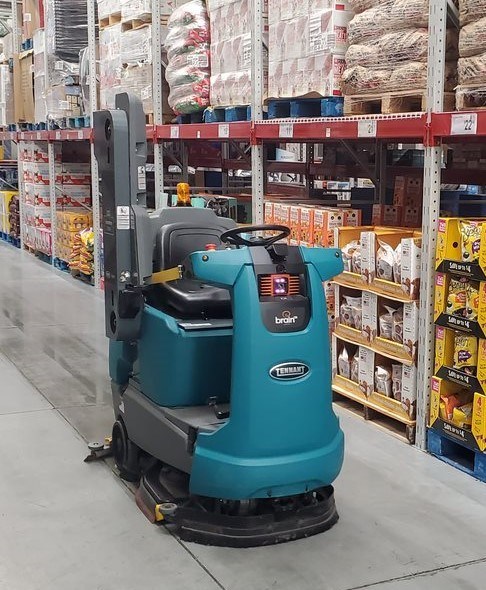
Martsenyuk said because floor cleaning and inventory scanning are two distinct workflows, they present two distinct routing challenges. “If you were to combine them, you'll probably be prioritizing one over the other.”
When creating missions and path planning, customers can optimize for one task over the other if they want to scan inventory while scrubbing. Or, they can use the same robot to perform cleaning and scanning at different times of day. It all depends on the specific goals of the customer.
“From a technology perspective, we support these different types of missions,” Martsenyuk said. “It's nice to be able to support those different modalities, different use cases with a single kind of BrainOS system.”
RFID and computer vision combined with AI analytics
AMRs are equipped with sensors - including cameras and lidar - and processors to enable safe and autonomous navigation. Martsenyuk said high-resolution cameras and RFID scanners can be added to a robot - typically housed in a scanning tower - to enable inventory data collection.
“With those two technologies, you can achieve quite a bit,” he added. “We also have industrial inventory use cases that we're working with that require a whole different set of sensors.”
Images are stitched together to make sense of full shelves or aisles from the front, while adding RFID tags to products allow robots to count items behind the front row of product. In cases where robots operate around shoppers and employees, BrainOS has to make decisions to help avoid occlusion of the shelves by people and obstacles when capturing images.
“Do I stop and wait for the person to move away? Do I try to go around? How long do I wait?’” Martsenyuk asked. “You have to figure out how to deal with the corner cases of the world being not perfect and static while you're capturing images.”
Using AI and machine learning, BrainOS Inventory AI analyzes images and other data captured by the robots. Martsenyuk said Brain Corp’s algorithms can not only identify which products are on the shelf, but they can also read price tags and SKUs on the shelf and associate those with visible products.
“The primary job of a shelf scanning robot or inventory analytics robot is … to provide insights to a customer as quickly as possible,” Martsenyuk said. “To do that, you need to have relevant, up-to-date image or sensor data - whether it's RFID or just vision - that you collect at least once a day, sometimes multiple times per day, depending on the use case.”
Presenting actionable insights through user interfaces
Data and insights are delivered to customers through a variety of user interfaces, including email reports, a cloud-based portal, and a mobile app. From a change management perspective, Donley said Brain Corp provides operations management tools to promote effective fleet management when they deploy new robots or features.
“What we like to be able to offer is a flexible approach in terms of how retailers or warehouses can get that data,” Donley said. “What we noticed was that some have different technological capabilities, different systems already set up.”

For customers without adequate inventory management software, Brain Corp built its own app that can provide employees with an action item list, including where items are out of stock, in the wrong location, or priced incorrectly. The app also enables employees to schedule robot missions and see where robots are in real time on a map.
For customers who already have inventory management software, Brain Corp created APIs to integrate data from Sense Suite. In some cases, Brain Corp forwards data from its Inventory AI feature, but customers can also import the images and run analytics through their own systems.
“We are collecting the data, and we know there are specific use cases that we're addressing today - out of stocks, price and accuracies, products and locations,” Donley said. “But with all the talk of AI, what else can you do with that data?”
Creating a wealth of data for tomorrow
At its core, Sense Suite is helping address a problem that Brain Corp’s customers identified: a lack of knowledge about their facilities for decision making.
“Imagine if you weren't required to go find the answers, but you were just given the answers. Right now you're just going in with, ‘I don't know where things are.’ Essentially, you're going in empty-handed in terms of knowledge,” Donley said. “We're automating that process and providing the answer. So instead of searching, you're just reviewing the answers and then deciding from there what action should take place.”
One way Brain Corp’s data is empowering decision making today is through Virtual Tours, a feature of Sense Suite that allows employees to view the 360 degree images captured by robots during their missions. Donley said this remote site management tool allows users to confirm what their data is showing.

Operations management tools also allow users to see historical robot location data, which can show areas missed during cleaning and/or scanning. Donley said proactive communications with operators through “autonomy services” help to ensure map data is healthy, telematics are in working order, and the robot is performing correctly. “If we keep seeing an assist in this area, maybe you should retrain the route so that it performs better through this space,” he added.
Donley said a big use for robots going forward is frequent data collection for supply chain decision making, especially because data being fed through AI models needs to be both timely and accurate.
“The data that the robot's collecting is a huge part of this solution in the equation, even outside of the use cases that we're addressing today,” Donley said. “Even if you don't have that specific purpose in mind today, two years from now you'll have a treasure trove of accurate, frequent data that you didn't have before. How can your operations, how can your supply chains improve now that you have access to this data?”
Want to learn more about data management in robots? This article was featured in the September 2024 Robotics 24/7 Special Focus Issue titled “Robots as mobile data platforms.”
BrainOS Sense Suite - Make sense of your inventory
About the Author
Follow Robotics 24/7 on Linkedin
Article topics
Email Sign Up




